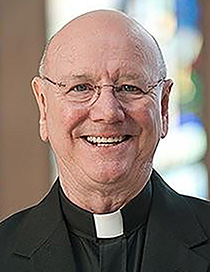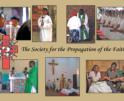
Faith

Three issues with regard to baptism were primary in the considerations of the council fathers.

SJ
The third chapter of the constitution is devoted to reforms pertaining to the other sacraments and to sacramentals -- those rituals which do not have a sacramental character (e.g., blessings) but are still part of the church's liturgy. The reforms proposed in this chapter correspond to the general principles enunciated in chapter one. Since sacraments are "sacraments of faith," they need to be more intelligible so as to help the faithful respond better to God's grace offered in them. (Sacrosanctum Concilium 59) In this vein, celebration of the sacraments in the vernacular languages is encouraged (under the direction of the bishops, of course). (SC 63)
The other two sacraments of initiation, baptism, and confirmation, (in addition to the Eucharist, the third) are dealt with first, not simply because of chronological priority but because of the great importance attached by the council to baptism. Baptism, it should be recalled, is the basis for the people's right to participation in the liturgy. (SC 14) The common priesthood of the baptized is fundamental not only to SC but also to the council's ecclesiology in general.
Three issues with regard to baptism were primary in the considerations of the council fathers. First, SC calls for the restoration of the adult catechumenate. (SC 63) Though their primary concern was "mission lands," the subsequent Rite of Christian Initiation of Adults (1972) caught on elsewhere very well, especially in North America. The rites associated with adult initiation were to become most capable of the adaptation foreseen in SC 37-40.
The second issue was infant baptism. Since the Middle Ages, baptism was administered in a manner that was not adapted to infants but rather as an abbreviated form of adult initiation that might be given, for example, to those in danger of death. (SC 67) For this reason, the role of parents and godparents was reconsidered, with the result being that in the revised rite, the parents professed their own baptismal faith. Previously, the godparents had proclaimed the faith as if they were infants.
Finally, the rite of confirmation was to be revised such that its connection with baptism as a rite of initiation was made clearer. For this reason, the constitution recommends that the renewal of baptismal promises be included in the revised rite. The rite could now be celebrated in the context of the Eucharist (SC 71). That indeed became the preferred, though not mandatory, practice.
The constitution deals very briefly with the sacrament of penance, directing only that the rite and formulae more clearly express "the nature and effect of the sacrament." (SC 72) Only in the subsequent reform was it made clear that penance is an act of reconciliation with the church as well as with God. There is no mention in the constitution of what later became three forms of celebration of the sacrament: individual penance, communal sacramental penance with individual confession, and communal sacramental penance with general absolution (in extraordinary circumstances).
The constitution takes a major step in re-articulating the Sacrament of the Anointing of the Sick, a title it finds more suitable than "Extreme Unction." (SC 73) Now, the sacrament was to be celebrated not so much at the point of death, but rather as soon as one is in danger of death or in old age. Viaticum, or Communion for the dying, is clearly recognized as the "last" sacrament. The document also makes a point about the adaptability of the prayers for the anointing to the varying circumstances of the sick. (SC 75) This is a point worth underlining since the council is rejecting a "one size fits all" approach to sacramental/liturgical celebration.
The directions for the revision of the ordination rites are rather brief. They did, however, open the way for a very significant change in the ordination liturgies. For example, the entire ceremony for the ordination of a presbyter (priest) now takes place after the Gospel, not before it. In the pre-Vatican II rite, the bishop imposed hands on the candidates twice: before the Gospel to confer the power to celebrate the Mass and after Communion to confer the power to absolve from sins.
With regard to the marriage liturgy, SC expresses a clear preference that the celebration of the matrimony take place during the Eucharistic liturgy -- after the homily and before the prayer of the faithful. (SC 78) This is a change from the pre-Vatican II rite in which the marriage ceremony took place before Mass even began. A great deal of adaptation in accordance with local customs is to be permitted for this celebration. (SC 77)
Finally, and perhaps most important in this section, the funeral rites were to be revised so that they might "express more clearly the Paschal character of Christian death." (SC 81) This directive was to inspire a significant move away from a more penitential approach to Catholic funerals, perhaps best symbolized by the use of the medieval sequence, "Dies Irae," which was excised from the Catholic funeral rite in the post-conciliar reform. The emphasis on the Paschal Mystery rather than purgatory, as the earlier rite had done, also led to a more positive focus on the resurrection of the body.
- Father John F. Baldovin, SJ, is professor of Historical and Liturgical Theology at Boston College School of Theology and Ministry.
Recent articles in the Faith & Family section
-
Did you know?Father Robert M. O'Grady
-
Sowing the Seeds of FaithMaureen Crowley Heil
-
Bread left overScott Hahn
-
Scripture Reflection for July 28, 2024, Seventeenth Sunday in Ordinary TimeJem Sullivan
-
What the universal call to holiness entailsDr. R. Jared Staudt





